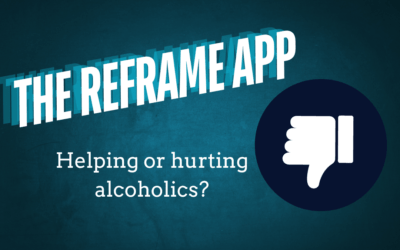Introduction
Kratom, officially named Mitagyna Speciosa, is a tropical tree native to parts of Southeast Asia. It has long been used in this region for herbal remedies where it is well known for its pain-relieving and sedative properties. It has recently gained popularity in other parts of the world, including the United States, and is commonly used recreationally due to its opiate-like effects on the body. Proponents of Kratom also tout its abilities to alleviate withdrawal symptoms and lessen cravings for those in recovery from substance abuse, albeit with little scientific evidence to support these claims.
Laws surrounding Kratom and its use have increasingly become a topic of debate between advocates, critics, local and state governments. Currently, Kratom regulations are reminiscent of laws surrounding marijuana just a few years ago. It is fully legal in some states, outright prohibited in others, and the federal government seems to be unable to make up its mind and either federally ban the substance or provide proper regulatory oversight.
In this article we will discuss what Kratom is, effects of its use, the associated risks, and give a detailed explanation of why we believe Kratom is a poor solution for the treatment of substance abuse. As a daily Kratom user myself for almost 8 years, I will also dive into my own experiences with the drug and my resulting addiction.
Understanding Kratom
While Kratom has been gaining in popularity over the past decade within the United States, many parents, healthcare professionals, recovery specialists, and even recreational drug users have yet to hear of it. Yet in the many states where it is legal, it can be found on the shelves of smoke shops or behind gas station counters. It is also commonly bought and sold in online stores, where a massive market surrounding the plant has grown.
Kratom is typically marketed as an herbal supplement or a botanical specimen labeled “not for human consumption.” However it is marketed, it is typically sold in either a capsule, powder, or liquid extract form and intended to be consumed for its opiate-like effects on the user. The powder derives from the leaves of the Kratom tree and typically has a green to brownish color depending on the strain and its origin. Extracts are simply concentrated forms of kratom alkaloids which are designed to provide more potent effects while also making the substance easier to consume.
Effects of Kratom
Kratom has two main alkaloids, or compounds that affect how the brain works causing changes in mood, awareness, thoughts, feelings, or behaviors. Mitragynine and 7-hydroxymitragynine are both drugs that activate opioid receptors in the brain, similar to heroin and oxycodone. Because of this, Kratom produces effects much like well-known narcotics although these effects are less pronounced.
Reported effects of Kratom include:
- Pain Relief: Due to its opioid-like nature and analgesic properties, Kratom is used by many to reduce symptoms of chronic pain from conditions such as arthritis, back injuries, etc.
- Euphoria: Many users report feelings of intense pleasure, improved mood, and increased sociability particularly at lower doses.
- Stimulation: At lower doses, certain strains of Kratom can act as mild stimulants much like caffeine.
- Sedation: At higher doses, feelings of relaxation, drowsiness, and sedation are more pronounced.
- Reduced Anxiety: Due to its sedative properties, feelings of anxiety and worry are often reduced while taking higher doses.
- Reduced Withdrawal Symptoms: Kratom is commonly used by people to reduce withdrawal symptoms from other drugs such as heroin, oxycodone, and alcohol.
It is important to note that how Kratom affects the human brain is an ongoing topic of research within the scientific community. Kratom has complex behavioral effects in humans, acting like a stimulant at low doses and an opioid at higher doses. There is currently much less data in regards to Kratom when compared to other common narcotics, and because of this we have an incomplete picture of its short and long-term side effects.
Known Risks Associated With Kratom Use
There are an array of risks associated with Kratom use in both the short and long-term, and it is our opinion that these risks outweigh any potential benefit a user may gain. Most notable are the risks of addiction and dependency when consuming Kratom consistently over a prolonged period of time, its short-term side effects, and the inherent dangers that result from a lack of oversight regarding its production and consumption.
Research indicates that people can become tolerant to and dependent on Kratom when consuming it regularly. While the risk of addiction is thought to be significantly less when compared to other stimulants and traditional opioids, mild to moderate withdrawal symptoms can occur when people stop taking Kratom. Withdrawal symptoms can include nausea, an inability to sleep, irritability, muscle pain and joint stiffness. These symptoms are much like withdrawal symptoms to other common opioids, although they are often experienced to a lesser degree.
While Kratom overdose is currently thought to be rare, deaths have been attributed to its use. Since we know so little about the effects the substance has on the body, there is also the potential for unknown risks associated with Kratom interacting poorly with other drugs. Taking too much Kratom in general can result in dizziness, nausea, sweating, and confusion, among other mild, yet unpleasant, side-effects.
Many of the dangers associated with Kratom use are worsened by the fact that there currently exists little regulatory oversight when it comes to its manufacturing and a total lack of quality control. The result is highly variable and unpredictable potency and an increased likelihood of users consuming contaminated products. Users are often given no dosage guidelines and are not warned of any of the dangers associated with Kratom’s use. Instead, its packaging may contain indications of its use as an herbal supplement/remedy or claims it is ‘not intended for human consumption,’ despite other marketing materials that make clear it is being sold specifically for this purpose.
In summary, despite studies suggesting Kratom’s decreased risks when it comes to dependency and overdose as compared to more traditional stimulants and opioids, it is by no means a safe alternative and has many of its own inherent dangers. Due to the novelty of Kratom and the lack of comprehensive research when it comes to its pharmacology and long-term effects, we should be very cautious when making any claims regarding its benefits or encouraging its use.
Using Kratom as a Solution To Substance Abuse
In recent years, it has become increasingly common for people with substance abuse issues to begin using Kratom as a ‘safe’ alternative to their drug of choice. Kratom purportedly decreases withdrawal symptoms and lessens cravings commonly associated with dependency. Put more simply, people start using Kratom in order to avoid the negative side-effects of quitting another drug.
Despite scant evidence supporting the efficacy of Kratom in treating drug addiction, many forums, youtube videos, and blog articles currently exist that claim Kratom as an effective solution to substance abuse and a practical means of self-treatment. Although the National Institute of Drug Abuse (NIDA) and the National Institutes of Health (NIH) are conducting ongoing research in experimental treatments using Kratom to combat opioid use disorder, safer and more well established forms of treatment exist and are currently available.
Why This is a Bad Idea
As addicts, we have been self-medicating for the entirety of our time as drug users. Whether it be past traumas, feelings of insufficiency, anxiety, or depression, there is something broken inside of us and we embarked on a crusade attempting to find external means to fix this internal problem. It did not work, and it was never going to.
Self-medication is never going to be the answer, and Kratom is just another drug people are using in a misguided attempt to do so. Admittedly, the consequences of using Kratom may be relatively mild when compared to other substances like heroin, oxycodone, alcohol, etc., but just because it is a better alternative does not mean it is a good solution.
Kratom is a drug, this is undeniable, and using one drug to quit another has never been a reliable means of fostering long-term recovery. It may mask withdrawal symptoms, it may decrease cravings, but Kratom itself is an addictive drug with side effects and consequences all on its own. The goal should be complete freedom from active addiction, not a new problem that we deem more manageable.
By continuing to self-medicate and simply substituting one drug for another, people increase the likelihood of relapse and the probability that they end up right back in the same spot they were before using Kratom. Therapy, support groups like NA and AA, medically-assisted treatment, detoxes and rehabs are all provenly effective methods to combat drug addiction. While we can not cure substance abuse disorders, and there is no perfect solution to this very complex problem, replacing one substance for another will always be a poor means of dealing with addiction.
My Personal Experience and Subsequent Addiction
I was about 22 years old when I first heard about Kratom in an online forum and decided to give it a try. I was already a habitual drug user and heavy drinker at the time, and the idea of having something I could buy legally that would give me similar effects to mild doses of opiates was appealing.
I was an everyday user from my first interaction with Kratom, and experimented heavily with different strains, dosages, and methods of consumption. After just a couple months I was taking over 5 grams every 3 hours, which resulted in me consuming over an ounce of Kratom per day. I continued like this for 8 consecutive years.
In that time, I spent tens of thousands of dollars and developed quite the addiction. Without it, I would become irritable, lethargic, and anxious. I needed to bring Kratom with me to work, on vacation, and to literally any event that made me leave the house for more than a few hours. The few times I forgot and left it at home required me to come up with some excuse as to why I needed to go back home – classic addictive behavior.
From my experience, dosing Kratom correctly is very hard to do. Too little and you experience none of the desired effects, but just a little too much and you experience a host of undesirable consequences such as extreme dizziness, nausea, and headaches. In order for me to be satisfied, like Goldilocks, the amount I took needed to be just right. This made switching brands and strains a nightmare to deal with because the potency would vary greatly and I would have to start from square one and find the right balance.
I finally quit taking Kratom, along with everything else, when I went to rehab at the age of 30. Because I was taking multiple substances daily, it’s hard to pinpoint what withdrawal symptoms came from what drug, but I did experience symptoms common to opiate withdrawal. I know for a fact that the few times I forgot my Kratom at home or ran out before my new batch arrived in the mail I would experience unpleasant side-effects, so I can confidently say from my own experience that Kratom is indeed physically addictive.
I am extremely happy I stopped using Kratom, and looking back I am amazed at how much work and effort I put in to continue using something that benefitted me so little if at all, but that’s the addicted mind for ya. The hope here is that by giving my firsthand account of using Kratom every day for 8 years straight, I’ve gained your trust enough for you to believe me when I say – it’s not worth it.
Kratom use might not have a high risk of overdose, and it may not be as addictive as traditional opioids and stimulants, but it is an addictive drug all the same. Using it habitually will have negative consequences on your life and it will be hard to stop. Save yourself the pain and the time – learn from my mistakes rather than your own. If you’re already using Kratom for whatever reason, find a means of quitting, and if you haven’t already started, don’t bother.
If you are struggling with addiction and substance abuse, contact an addiction counselor, talk to a therapist, or join a support group, but don’t attempt to self-medicate by using experimental and unregulated alternatives like Kratom. Long-term recovery is the result of freeing ourselves completely from addictive substances, which is something Kratom will never be able to promise.





